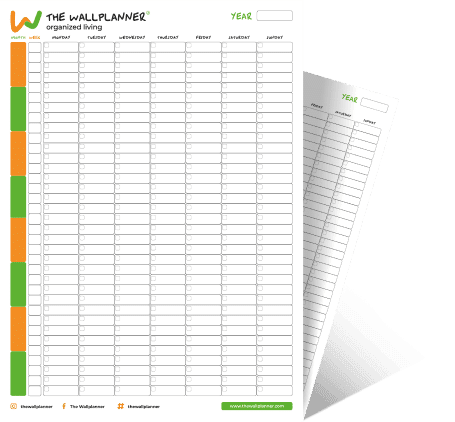Which week is it?
We are in week ...
Which week is it? Everything you need to know about week numbers in the Netherlands
The question "which week is it?" seems simple, but behind that one little phrase lies a world of structure, agreements and habits. Week numbers are widely used in the Netherlands (and many other European countries). In schedules at work, at school, in construction projects, in healthcare, in government institutions - and even when booking holidays. Yet many people do not know exactly how week numbers are calculated, or why one year has 52 weeks and another 53.
In this comprehensive overview, we explain:
- What exactly a week number is
- How week numbers are calculated according to the ISO 8601 standard
- Why week numbers are important in everyday life
- How to always quickly find out which week it is
- And: a summary table of week numbers with dates
What is a week number?
Simply put, a week number is the number assigned to a particular week of the year. Week 1 is the first week of the year, week 2 the second, and so on. In total, a year usually has 52 weeks, but sometimes there are 53.
The week number makes it easier to record appointments, schedules or reports unambiguously. Especially if you work with teams, clients, schools or agencies.
How are week numbers determined?
The Netherlands (and almost all of Europe) uses the international standard ISO 8601 for week numbers. According to this standard:
- Always starts the week on Monday
- Is week 1 the week in which the first Thursday of the year falls
- So do you have years where 1 January still falls in week 52 of the previous year
- And sometimes you have a year with 53 weeks, if 1 January falls on a Thursday, or if the year ends on a Thursday
This means that the week numbers may fall slightly differently each year. Here you can see an example for 2025:
Why are week numbers so important?
Weekly numbers may seem like something for businesses or governments, but in practice we all use them more often than we think:
- 🧑🏫 In schoolsClass schedules, holidays, test weeks and reports often go by week number
- 🏗️ In construction and planning: projects are scheduled in weeks 23 to 27, e.g.
- 🏢 At work: sprint planning, quarterly targets or reporting
- 🧾 In administration: time recording and invoicing are often done on a weekly basis
- 🧳 Booking holidays: "We want to leave in week 29"
- 👨👩👧👦 For families: co-parenting, sports schedules, childcare schedules
In short: whether you are running a family or managing a team, knowing which week you are in saves confusion, miscommunication and duplication.
How do you quickly know what week we are in?
Of course, you can print out an annual calendar every year or put it in Excel. But it can be easier:
- ✅ Use a digital week number widget or script (like the one at the top of this page)
- ✅ Check the week number on your smartphone (is often in calendar options)
- ✅ Hang a big weekly planner whiteboard on - see at a glance where you are and what is coming up
With a physical planner, you have an instant overview for the whole family or team. No app to open, no scrolling, just on the wall.
Frequently asked questions about week numbers
Why doesn't week 1 always start on 1 January?
Because ISO 8601 says: week 1 = the week with the first Thursday of the year. As a result, 1 January can sometimes still fall in week 52.
How many weeks does a year have?
Usually 52, sometimes 53. 53 happens if the year ends on a Thursday or if 1 January falls on a Thursday.
Is the weekly number in the US the same as in the Netherlands?
No. In the US, the week starts on Sunday and a different standard is used. Week 1 there is usually the week in which 1 January falls, regardless of the day.
Are week numbers useful for children?
Yes! Especially when combined with a clear visual weekly schedule. Children get a better grip on time, rhythm and expectations.
Tip: Make it easy on yourself
Are you also sometimes confused about which week it is? Do you need your colleague to explain when the project starts in week 26? Or are you looking for an overview for home?
Then use a whiteboard weekly planner. With this, you can literally see on the wall:
- Which week we are in
- What's going on, with whom
- How to plan ahead
👉 View The Wallplanner and make "what week is it?" a question you never have to think about again.

Always in control of your week? You can.
With the whiteboard family planner, you keep an overview without stress. No more loose notes, no more "oh yes moments" and no more diaries that are only half-filled. You can see at a glance what's going on - this week and the rest of the year.
- Whiteboard weekly planner that brings calm
- Your whole year in one clear overview
- For home, work or study
- Easy to use, visible on the wall
- Reusable every day
€ 29,95 including VAT & shipping

Order before 1:00 PM, shipped the same day.

